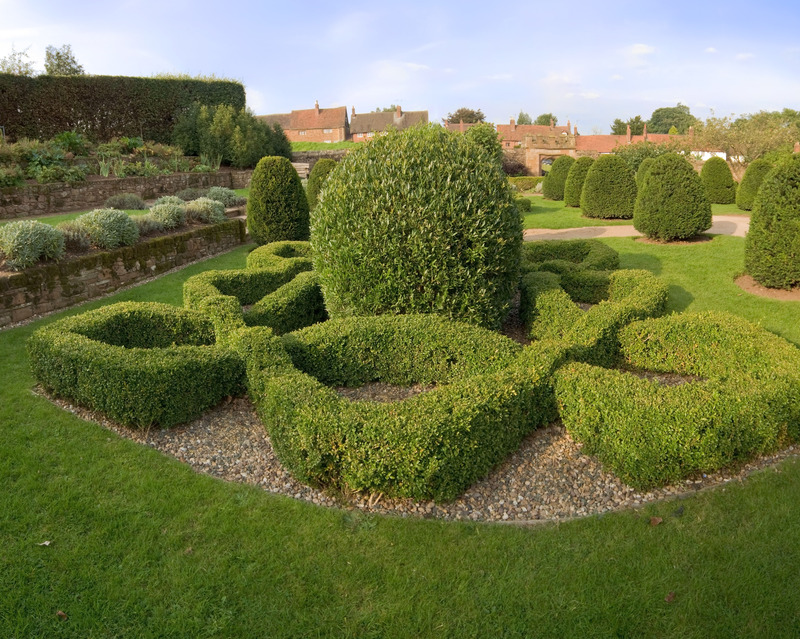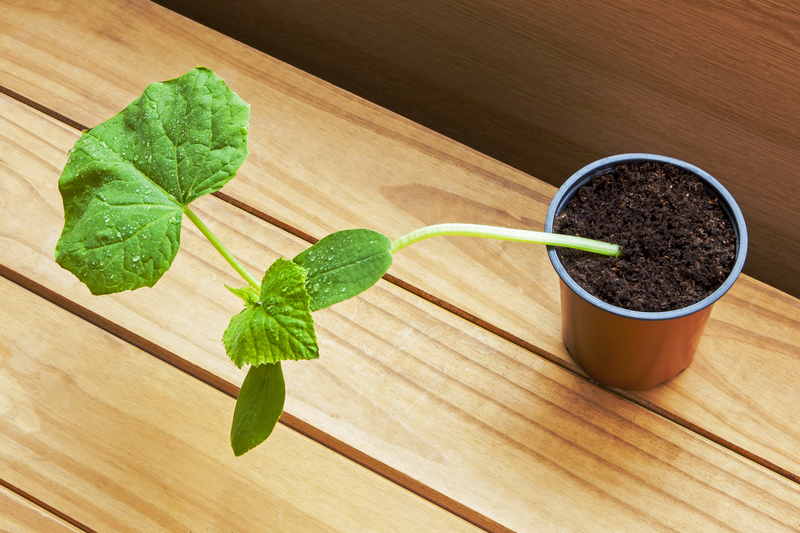Breathing New Life into Soil with Organic Matter
Posted on 20/08/2025
Breathing New Life into Soil with Organic Matter
Healthy soil forms the bedrock of successful gardening, sustainable agriculture, and vibrant ecosystems. Often overlooked, the vitality and productivity of soil are directly linked to the world above--impacting food security, biodiversity, and even climate resilience. At the core of rich, thriving soil lies the abundant presence of organic matter. But what exactly is organic matter, and how does it breathe new life into our soils? This comprehensive article delves deep into the transformative power of incorporating organic material into the earth, its invaluable benefits, and actionable steps for reinvigorating our soils the organic way.
What Is Organic Matter and Why Is It Important?
Organic matter refers to the decomposed remains of plant and animal materials present in the soil. This includes everything from fallen leaves and crop residues to compost, manure, and even microscopic traces of dead roots and soil organisms. Over time, these substances break down through the actions of microorganisms, worms, and fungi, creating a nutrient-rich, dark material known as humus.
- Organic matter is the engine of soil fertility: It supplies essential nutrients for plants, improves soil structure, and enhances the soil's ability to hold onto water and air.
- It supports biodiversity: Healthy amounts of organic content nurture beneficial insects, microbes, and earthworms--nature's underground workforce.
- Organic matter boosts climate resilience: By increasing water retention and promoting carbon sequestration, it helps soils withstand drought, floods, and extreme temperatures.
Understanding the Types of Organic Matter
All organic matter in the soil goes through stages as it decomposes. To understand how to best nurture your soil, it helps to know the difference between:
- Fresh Residues: Recently added materials like crop stubble, grass clippings, or animal manure. These release nutrients rapidly but are quickly broken down.
- Active Organic Matter: Intermediate products of decomposition. These support most of the soil's microbial life and nutrient cycling, lasting months to years.
- Stable Organic Matter (Humus): The final, well-decomposed fraction that can persist for decades. Humus is critical for long-term fertility, soil structure, and moisture retention.

How Organic Matter Breathes Life into Soil
Whether you're a backyard gardener, farmer, or steward of natural landscapes, understanding how organic materials revitalize soil health is key to restoring worn-out or depleted soils. Let's explore the myriad ways adding organic matter to soil acts as a natural life support system.
1. Supercharging Soil Fertility
Nutrient cycling is at the heart of soil health. Organic matter acts as a slow-release reservoir of plant nutrients. As microbes break down materials, macronutrients like nitrogen (N), phosphorus (P), and potassium (K), as well as vital micronutrients, become available for plant uptake. This not only reduces the need for chemical fertilizers but also promotes steady, sustained plant growth.
- Organic matter buffers nutrient availability, preventing leaching--fertilizer runoff that can pollute waterways.
- It improves the cation exchange capacity (CEC), meaning the soil can hold onto and exchange nutrients more effectively.
2. Enhancing Soil Structure and Porosity
Soil texture and structure are critical for supporting healthy root development. Adding organic matter helps bind sand, silt, and clay particles into loosely aggregated crumbs (called soil "aggregates"). This improves aeration and allows roots to penetrate deeper.
- Reduced compaction: More organic material helps prevent soils from becoming hard or crusted--beneficial for heavy clay soils.
- Better root growth: Roots can access air, water, and nutrients far more easily when organic matter is present.
3. Increasing Water Holding Capacity
Organic matter absorbs many times its weight in water. In sandy soils, it acts like a sponge, holding moisture that would otherwise drain away. Even in heavier soils, it increases porosity, letting excess water drain and avoiding root rot.
- Extends soil moisture during droughts: Plants grown in organically enriched soil withstand dry periods much better.
- Reduces runoff and erosion: More water infiltrates the earth, preventing topsoil loss.
4. Promoting a Flourishing Soil Ecosystem
Soil is teeming with life. With sufficient organic soil amendments, populations of bacteria, fungi, earthworms, beetles, and other beneficial organisms explode. These creatures help decompose remnants faster, cycle nutrients, aerate the soil, and even suppress pests and diseases.
- Healthy soils are alive -- underground communities drive productivity and disease resistance.
- Certain microbes form symbiotic relationships with plant roots, improving nutrient uptake and stress tolerance.
5. Locking Away Carbon and Combating Climate Change
Another crucial role: Organic matter is a powerful means of sequestering carbon from the atmosphere. Through photosynthesis, plants draw down CO2 and store it in their tissues. When these residues decompose into stable humus, much of that carbon remains trapped in the soil for decades--even centuries.
- Increasing soil organic content is a natural, scalable climate solution!
- Practices that protect and build organic matter also help farmers mitigate and adapt to climate extremes.
Best Practices for Adding Organic Matter to Your Soil
Now that we've explored the why, let's focus on the how: practical strategies to revive your garden, farm, or landscape with resilient organic-rich soils.
1. Composting: Nature's Recycling System
Compost is often referred to as "black gold" for gardeners. By recycling kitchen scraps, yard trimmings, and other vegetative waste, you can create a rich, crumbly soil amendment teeming with nutrients and beneficial microbes.
- How to compost: Layer "greens" (nitrogen-rich, like food waste) with "browns" (carbon-rich, like dry leaves) and keep the pile moist and aerated.
- Apply finished compost annually as a top dressing, or mix it into planting beds.
2. Cover Cropping and Green Manures
Don't let your soil go bare! Planting a cover crop (like clover, rye, vetch, or buckwheat) during the off-season protects soil from erosion and, when tilled in, adds substantial organic material and nitrogen.
- Some covers (legumes) fix nitrogen, directly boosting soil fertility.
- Deep-rooted crops break up compaction and add biomass deep underground.
3. Mulching for Soil Enrichment
Mulching involves covering soil with organic materials like straw, wood chips, leaves, grass clippings, or shredded bark. It suppresses weeds, conserves moisture, and, as it breaks down, slowly feeds the soil.
- Apply a 2-4-inch layer around plants and on bare soil.
- Keep mulch a few inches from plant stems to prevent rot.
4. Incorporating Manure and Aged Animal Products
Manures from herbivores--such as cows, horses, rabbits or poultry--provide a potent combination of organic matter and nutrients. Always use well-aged or composted manure to avoid burning plants and to reduce pathogens.
- Apply in autumn or several weeks before planting.
- Mix lightly into the soil or use as a mulch.
5. Using Organic-Based Soil Amendments
Other valuable amendments include:
- Peat moss (for acid-loving plants)
- Coconut coir (sustainable, high-water-holding)
- Leaf mold (decayed leaves create rich humus)
These can supplement compost, particularly in newer gardens or degraded soils.
Common Mistakes to Avoid When Improving Soil Organic Matter
While the benefits of revitalizing soil with organic content are clear, there are a few mistakes to avoid:
- Using fresh, high-manure or very "hot" waste (like fresh chicken manure): Can burn plants unless aged or composted first.
- Over-applying organic amendments: More isn't always better. Excessive additions can acidify the soil or create nutrient imbalances.
- Not diversifying organic sources: Rotating materials builds a more balanced, resilient soil microbiome.
The Long-Term Impact: Building Resilient, Living Soil
As you continue to breathe new life into soil with organic matter, the effects multiply year after year. Soil texture improves, yields increase, pest and disease pressures drop, and climate extremes become less damaging.
- Soil rich in organic content is the foundation for regenerative agriculture and sustainable food production.
- Healthy soils nurture healthier plants, which means better nutrition for people and animals, too.
- Restoring organic matter supports carbon sequestration, making your gardening or farming practices part of the climate solution.

Frequently Asked Questions about Organic Matter and Soil Health
How much organic matter should I add to my soil?
It depends on your starting soil and your crops. For most gardens, applying 1-2 inches of compost or well-rotted organic matter annually will suffice. Aim for 3-5% organic matter in garden beds; degraded soils may need more frequent additions at first.
How do I know if my soil needs more organic content?
- Soil feels hard and compacted, or dries out rapidly.
- Poor plant growth or repeated nutrient deficiencies.
- Water runs off rather than soaking in; earthworm numbers are low.
Is organic matter good for all soil types?
Yes! While the degree of benefit may vary, adding organic material improves clay, loam, and sandy soils alike by balancing extremes and enhancing structure.
What is the difference between organic matter and organic fertilizer?
Organic matter improves physical, chemical, and biological properties of soil, whereas organic fertilizers (like bone meal, blood meal, or fish emulsion) are concentrated sources of specific nutrients. Both can play valuable, complementary roles.
Are there any organic materials to avoid?
Avoid using diseased plant material, weeds gone to seed, or pet waste in compost piles. Also, steer clear of walnut leaves/hulls, which contain compounds harmful to many vegetable plants.
Conclusion: Embrace the Cycle of Life--Invest in Organic Matter for Vibrant Soil
Organic matter is not just an additive--it is the heart of living, productive, resilient soil! By understanding and respecting the powerful cycles of decomposition and renewal, we can breathe fresh life into soil naturally. Every fruit peel, grass clipping, and fallen leaf can play a role in restoring abundance to your garden or landscape. Whether you compost, mulch, plant cover crops, or simply protect the soil from erosion, each step you take supports a healthier future above and below ground.
Remember: The richest harvests of tomorrow depend not on synthetic shortcuts, but on restoring organic matter and nurturing the soil's own life-giving processes today. The earth beneath our feet is alive--let's keep it that way.

